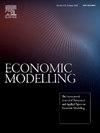Understanding agricultural subsidies and factor allocation: A general equilibrium analysis
IF 4.7
2区 经济学
Q1 ECONOMICS
引用次数: 0
Abstract
This study examines the general equilibrium effects of agricultural subsidies on factor allocation in China. We develop a multisector dynamic general-equilibrium model that incorporates labor and land market frictions and multiple subsidy types, calibrated with data from 2002 to 2021. Results indicate that subsidies generally drew labor and capital from the nonagricultural sector, creating distortions in interindustry factor markets while reducing agriculture's output share. Subsidies increased per capita agricultural capital and land area, raising labor productivity but lowering production efficiency. Policy simulations show that shifting a greater share toward machinery subsidies improves welfare and aggregate output, optimizing China's subsidy structure. Moreover, industrial technological progress, lower migration costs, and international trade alter the effectiveness of subsidies.
理解农业补贴与要素配置:一般均衡分析
本文考察了中国农业补贴对要素配置的一般均衡效应。我们开发了一个包含劳动力和土地市场摩擦以及多种补贴类型的多部门动态一般均衡模型,并使用2002年至2021年的数据进行校准。结果表明,补贴通常从非农部门吸引劳动力和资本,造成产业间要素市场扭曲,同时降低农业产出份额。补贴增加了人均农业资本和土地面积,提高了劳动生产率,但降低了生产效率。政策模拟表明,将更大份额转向机械补贴提高了福利和总产出,优化了中国的补贴结构。此外,工业技术进步、较低的移民成本和国际贸易改变了补贴的有效性。
本文章由计算机程序翻译,如有差异,请以英文原文为准。
求助全文
约1分钟内获得全文
求助全文
来源期刊

Economic Modelling
ECONOMICS-
CiteScore
8.00
自引率
10.60%
发文量
295
期刊介绍:
Economic Modelling fills a major gap in the economics literature, providing a single source of both theoretical and applied papers on economic modelling. The journal prime objective is to provide an international review of the state-of-the-art in economic modelling. Economic Modelling publishes the complete versions of many large-scale models of industrially advanced economies which have been developed for policy analysis. Examples are the Bank of England Model and the US Federal Reserve Board Model which had hitherto been unpublished. As individual models are revised and updated, the journal publishes subsequent papers dealing with these revisions, so keeping its readers as up to date as possible.
 求助内容:
求助内容: 应助结果提醒方式:
应助结果提醒方式:


